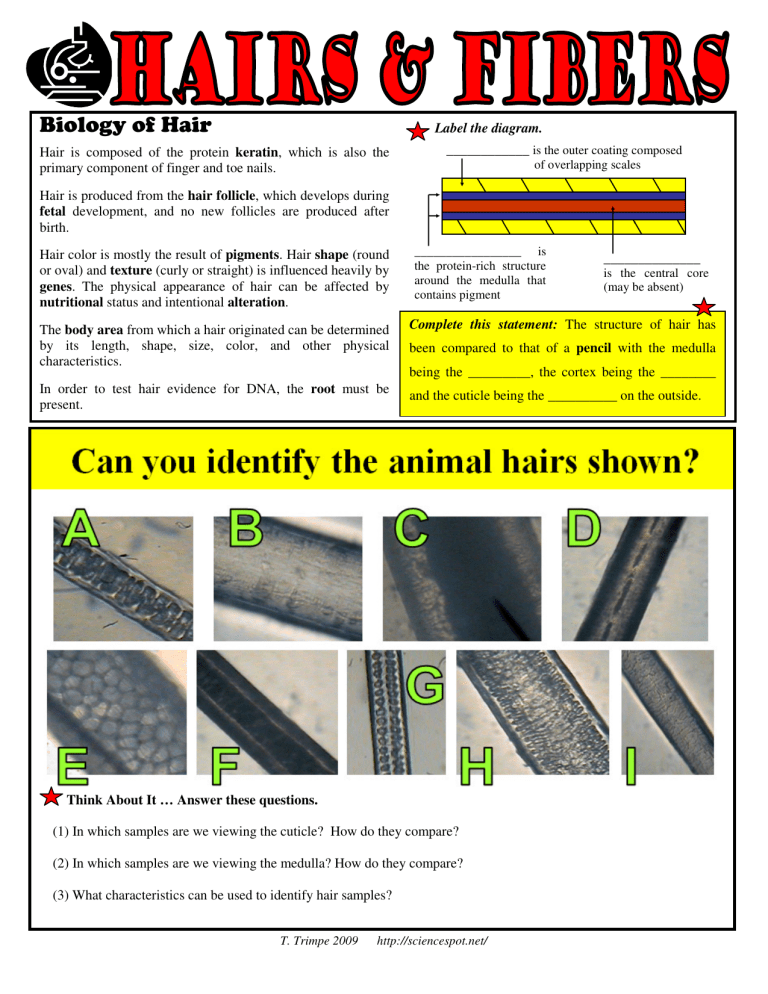
Biology of Hair Label the diagram. Hair is composed of the protein keratin, which is also the primary component of finger and toe nails. ____________ is the outer coating composed of overlapping scales Hair is produced from the hair follicle, which develops during fetal development, and no new follicles are produced after birth. Hair color is mostly the result of pigments. Hair shape (round or oval) and texture (curly or straight) is influenced heavily by genes. The physical appearance of hair can be affected by nutritional status and intentional alteration. _________________ is the protein-rich structure around the medulla that contains pigment ______________ is the central core (may be absent) The body area from which a hair originated can be determined by its length, shape, size, color, and other physical characteristics. Complete this statement: The structure of hair has In order to test hair evidence for DNA, the root must be present. and the cuticle being the __________ on the outside. been compared to that of a pencil with the medulla being the _________, the cortex being the ________ Think About It … Answer these questions. (1) In which samples are we viewing the cuticle? How do they compare? (2) In which samples are we viewing the medulla? How do they compare? (3) What characteristics can be used to identify hair samples? T. Trimpe 2009 http://sciencespot.net/ Fiber Evidence Natural Fibers A fiber is the smallest unit of a textile material that has a length many times greater than its diameter. It can be spun with other fibers to form a yarn that can be woven or knitted to form a fabric. Many different natural fibers that come from plants and animals are used in the production of fabric. Cotton fibers are the plant fibers most commonly used in textile materials, while the most common animal fiber is wool. Most wool fibers come from sheep. The type and length of fiber used, the type of spinning method, and the type of fabric construction all affect the significance of fiber evidence. Synthetic Fibers Matching unique fibers on the clothing of a victim to fibers on a suspect’s clothing can be very helpful to an investigation, whereas the matching of common fibers such as white cotton or blue denim fibers would be less helpful. More than half of all fibers used in the production of textile materials are synthetic or man-made. Nylon, rayon, and polyester are examples of synthetic fibers. Cross transfers and multiple fiber transfers between the suspect's clothing and the victim's clothing dramatically increases the likelihood that these two individuals had physical contact. Cross-section of a man-made fiber Think About It … Answer these questions. (1) Which samples are natural fibers? (2) Which samples are synthetic fibers? (3) What characteristics can be used to identify fiber samples? T. Trimpe 2009 http://sciencespot.net/






